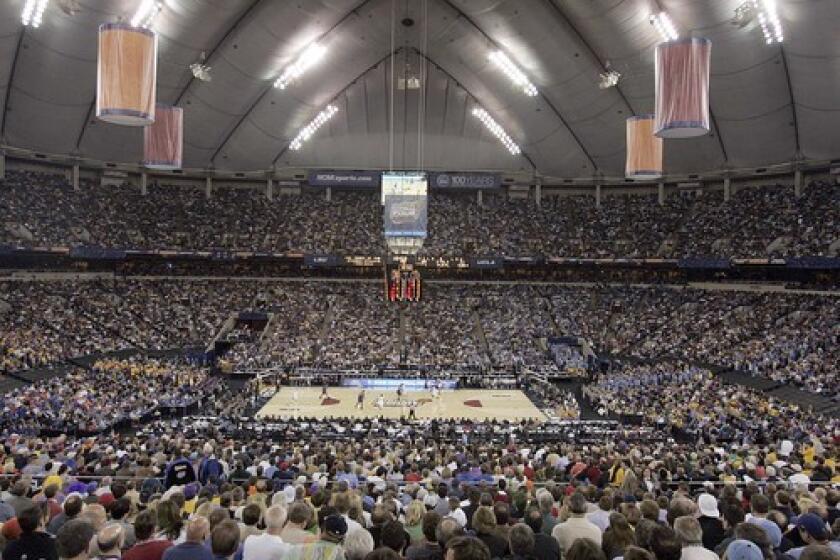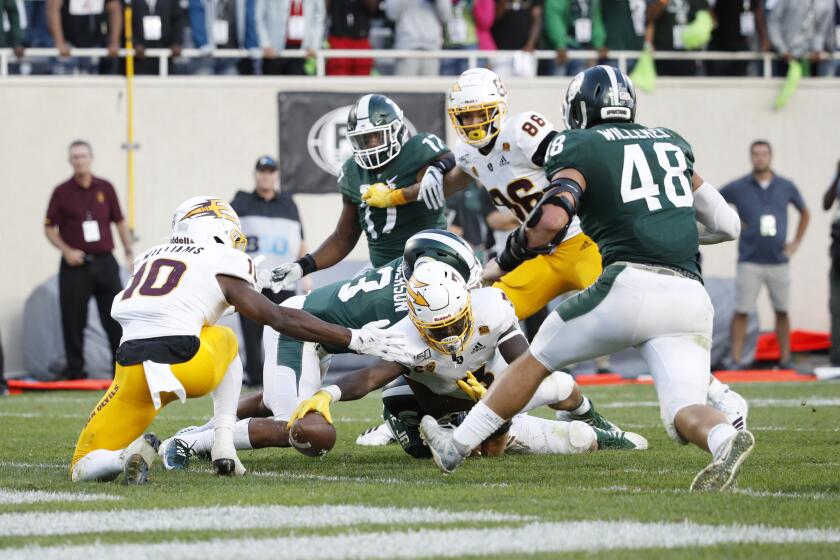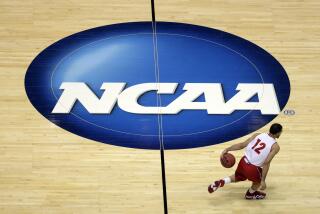NCAA’s argument against Fair Pay for Play has no merit and Week 3 mismatches prove it
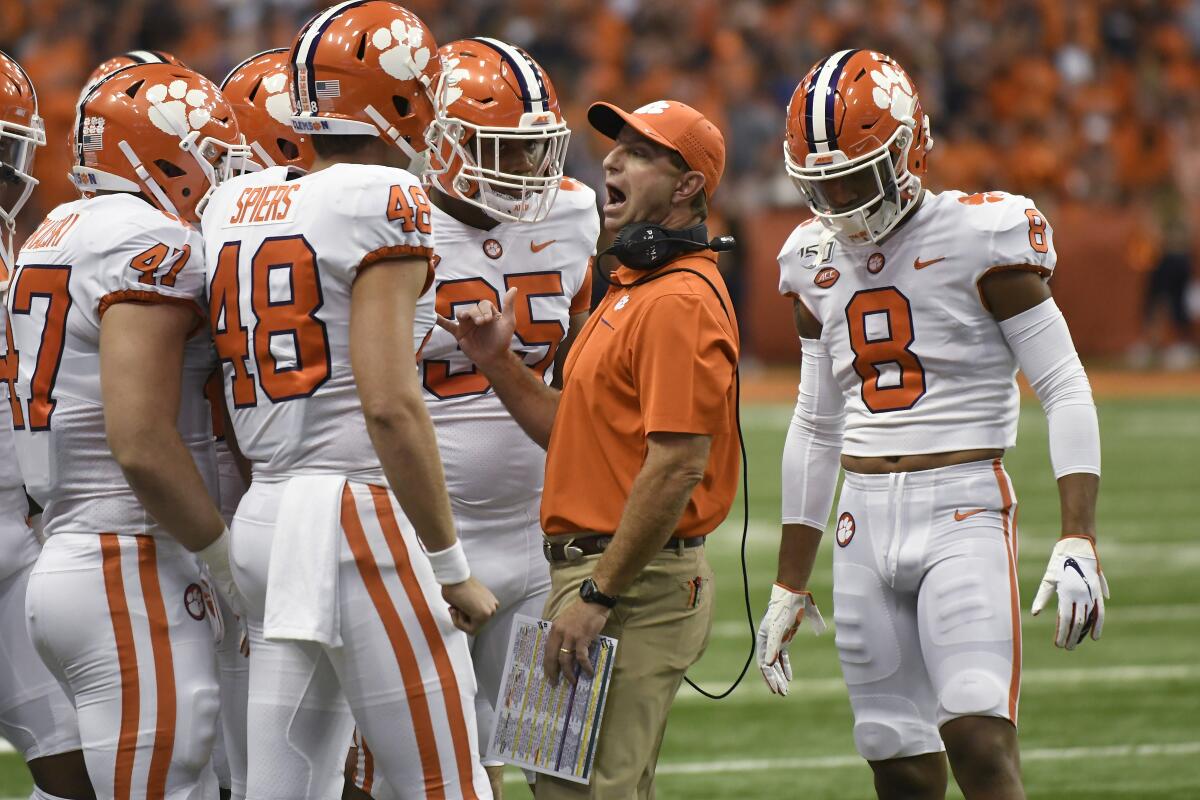
- Share via
Let’s assume California Gov. Gavin Newsom had better things to do with his Saturday than keep track of college football results from around the country.
With sincere hope that is the case, we will make it easy for him and his staff in Sacramento. The results were the same thing that happens just about every weekend of the fall — the best teams in the nation beat the heck out of their opponents.
The governor’s office surely received the letter sent from the NCAA this week, urging him to veto the Fair Pay for Play Act, Senate Bill 206, which passed unanimously through the state legislature and would allow college athletes to profit from their name, image and likeness, beginning Jan. 1, 2023 — if Gov. Newsom signs the bill into law.
The NCAA argued in this letter from its board of governors — as it has in every court that has staged a challenge to its amateurism rules in the last five years — that athletes being paid for endorsements, autographs and other promotions would upend the competitive balance that the NCAA’s enforcement rules are said to maintain.
California would allow college athletes to earn money from the use of their names and likenesses under a bill passed by the state Legislature on Wednesday.
The NCAA’s contention is that if programs or boosters could pay players their free-market value, the top talent would end up at the same schools. What the NCAA neglected to mention is that there already is no competitive balance in college football.
Newsom shouldn’t entertain this argument. The NCAA is a cartel that fixes the price of its labor at the cost of a college education plus living expenses. The governor could find economists lining up at the steps of the capital who would tell him that cartels are more likely to be against competition than for it.
In a sport with real balance, Saturday’s slate would have been packed with potential upsets — although, the idea of an “upset” is based upon there not being a level playing field.
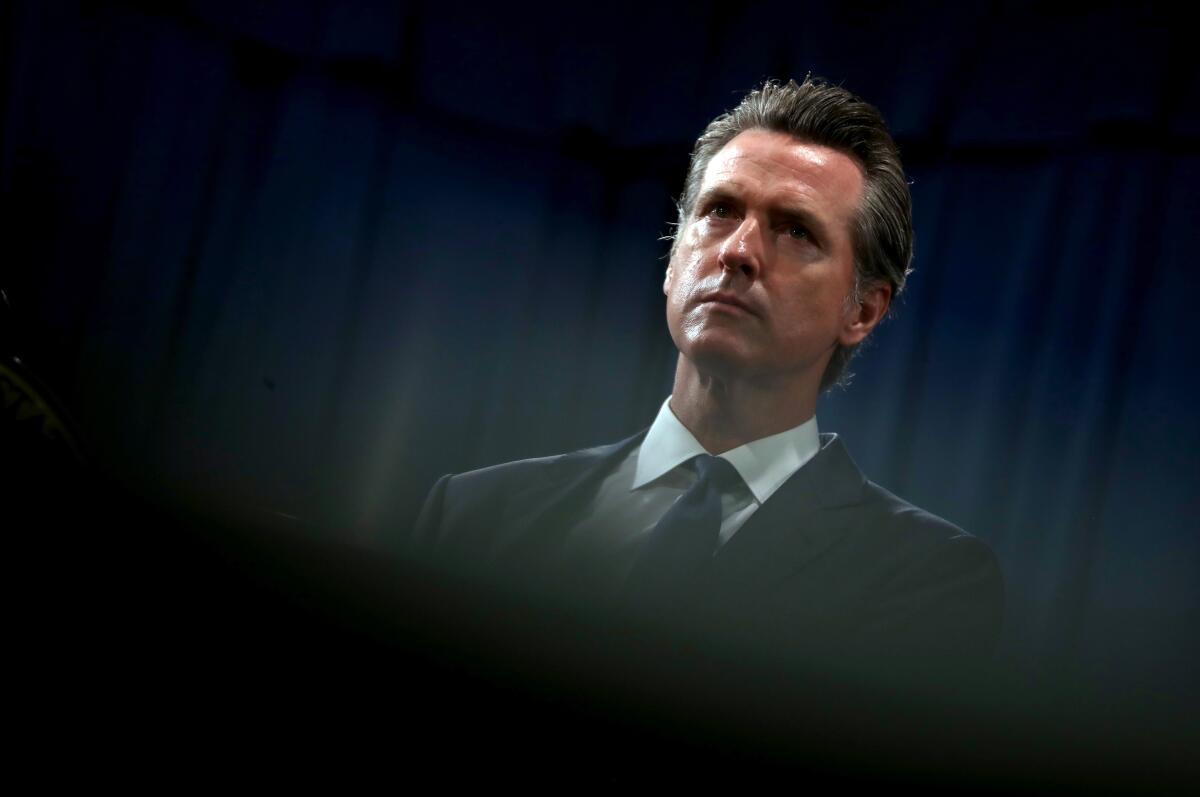
Four of the top six teams in the country played road games against fellow Power Five schools. No. 1 Clemson at Syracuse, No. 2 Alabama at South Carolina, No. 5 Oklahoma at UCLA and No. 6 Ohio State at Indiana all were set up to be titanic struggles in the NCAA’s fantasy world.
To get the day started, the Buckeyes smoked the Hoosiers 51-10. Then, the Crimson Tide ran away from the Gamecocks 47-23, as star quarterback Tua Tagovailoa had career highs for completions (28), passing yards (444) and touchdown passes (five). Later, Clemson and Oklahoma got up early and rolled the Orange and the Bruins, respectively.
The combined score of those four potentially marquee games? 187-53.
This is college football today, and the idea that the landscape could become any more uneven because the players get a cut of the hundreds of millions of dollars they’re bringing in for the schools is ridiculous. If that’s the NCAA’s best argument, it should stop talking. (It won’t.)
The four-team College Football Playoff is five years old. Alabama has been in it all five years and won the 2015 and 2017 national championships. Clemson has been in it four times and won the 2016 and 2018 crowns. The Crimson Tide and Tigers are the favorites to play for the title this season, and it would be stupid to think it will be any different next year.
Traditional powers Oklahoma, Ohio State and Georgia round out the top five programs of the CFP era, and the rest of the top 10 this week is composed of schools expected to be there based on history.
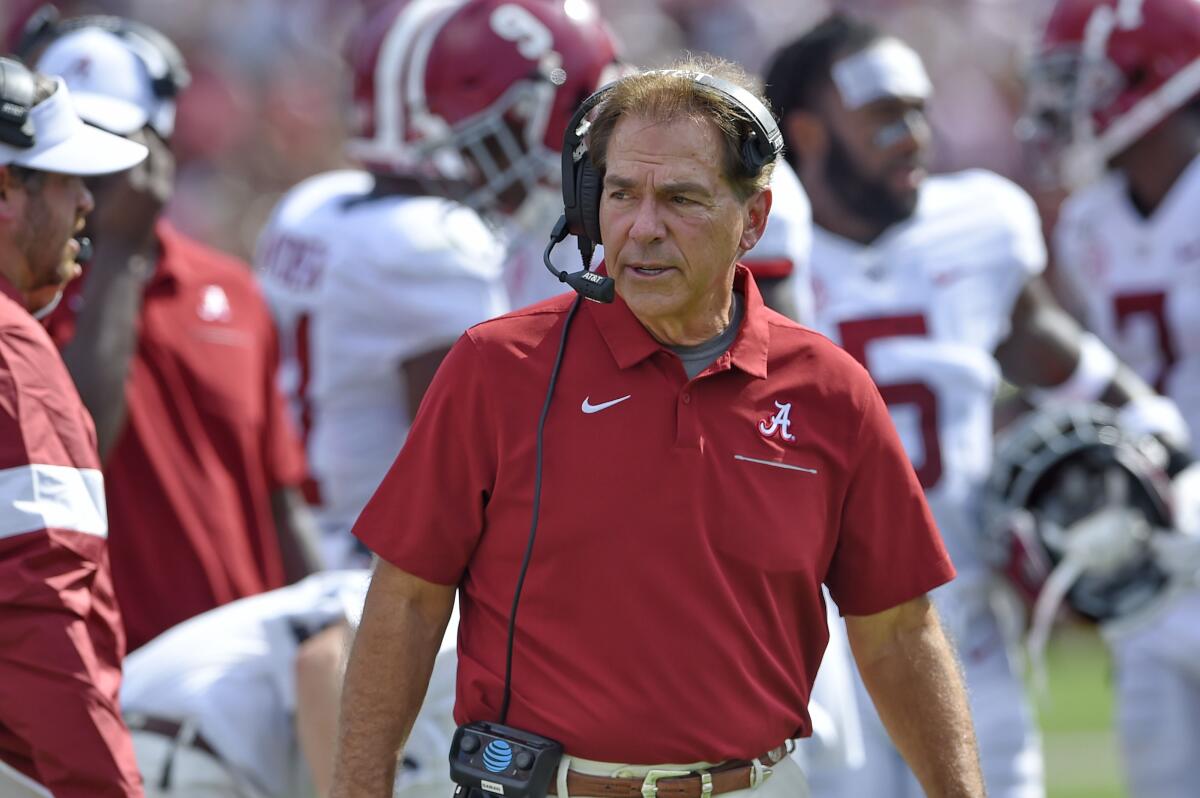
These schools spend more money than the majority of their competition already. Only, it doesn’t go to the players, so everything else gets inflated value in this stunted market.
Clemson pays coach Dabo Swinney $9.2 million a year. Alabama’s Nick Saban earns $8.3 million. They continually funnel profits back into the facilities and luxuries that — guess what? — are used to recruit the best players.
There never has been competitive balance in college football. How fun would it be if removing the constraints from player earning was the catalyst for actually creating it?
Here to service you
It was easy to see it coming for Colorado. The Buffaloes were coming off an emotional overtime win over old rival Nebraska, and who was waiting for them a week later but Air Force?
There is never a good time to schedule one of the service academies — ask Michigan how much fun it was to host Army last weekend. But Air Force coming to town after a big game like Nebraska was less than ideal. Preparing for the triple-option in one week is one of the hardest coaching challenges in football.
Arizona State beats No. 18 Michigan State 10-7 after the Spartans’ game-tying field goal is negated; Stanford loses 45-27 at No. 17 Central Florida.
The Buffaloes, who appeared to be at least slightly improved under first-year coach Mel Tucker, fell behind 20-10 before forcing overtime at 23-23. Air Force scored on the first play of overtime and held Colorado, winning 30-23.
After three weeks, the Mountain West is an impressive 7-8 against Power Five opponents.
What does that say about competitive balance?
Perhaps it says there is less of a gap between the top of the “group of five” and the bottom of the Power Five than there is between the Alabamas and Clemsons of the world and teams in their own conferences.
Stanford nosedive?
The last time Stanford lost more than five games in a season was 2008, Jim Harbaugh’s second season at the helm.
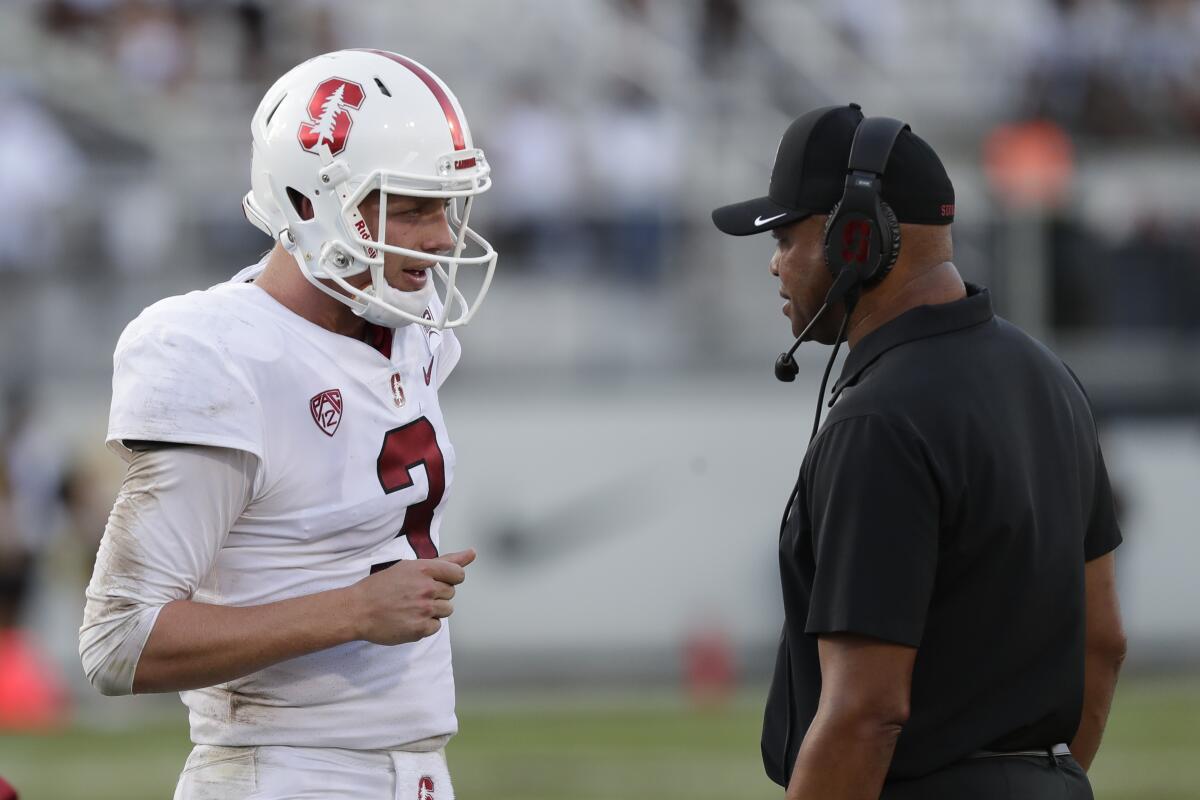
It would be very not David Shaw-like to lose control of a campaign, but after back-to-back blowouts at USC and Central Florida, the Cardinal appear to be in danger of a regression.
Four of their next five games are at home, but two of those are against No. 15 Oregon and No. 23 Washington.
At this point, Stanford making a bowl game is no guarantee.
Big Ten East hurting
Two top-25 Big Ten East teams that were hopeful they could challenge Ohio State, Michigan and Penn State in the division took tough losses Saturday.
No. 21 Maryland, fresh off a 63-20 pummeling of Syracuse, could not convert two late red zone opportunities and lost at Temple 20-17.
No. 18 Michigan State showed its offense is still offensive in a 10-7 loss to Arizona State.
Which of these teams has the best chance to recover?
Maryland. The Terrapins play extremely well at home and will have a chance to knock off No. 13 Penn State on Sept. 27 and No. 10 Michigan on Nov. 2.
More to Read
Go beyond the scoreboard
Get the latest on L.A.'s teams in the daily Sports Report newsletter.
You may occasionally receive promotional content from the Los Angeles Times.

